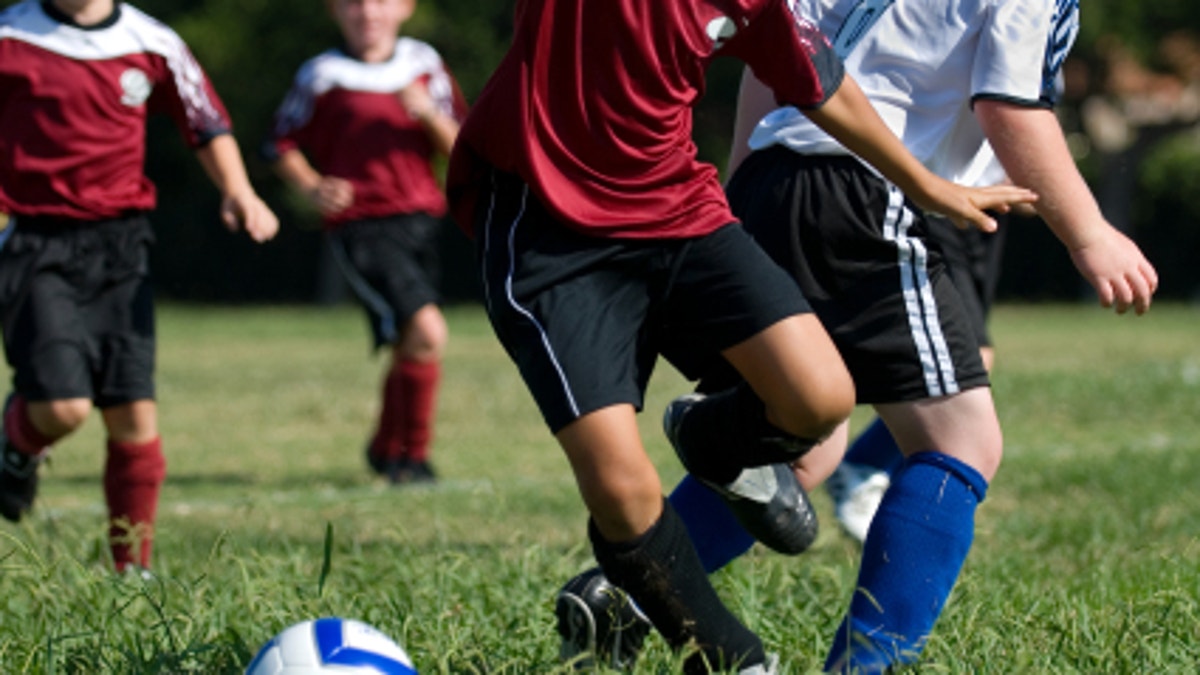
Youth soccer officials are casting doubt on a recent study that claims regularly heading a soccer ball—even just a few times a day—can lead to brain injury.
"I have some concerns with the study based on variability and the number of participants," said Jim Cosgrove, executive director of US Youth Soccer, which is headquartered in Frisco, Texas.
"The main concern we have is the data isn't quite specific enough in regards to heading as the cause of concussions," he added. "Other impacts could create the damage."
However, Cosgrove said that players under the age of 10 should try to refrain from heading for developmental reasons.
"Younger children don't necessarily have the physical maturity to properly head the ball, or they balk at being put in that position," he said. "Obviously, the ideal is to create a fun and safe environment for kids."
For the study, researchers used an advanced MRI-based imaging technique to scan the brains of 38 amateur soccer players, then compared the images to the number of times they headed the ball during the past year.
Players who frequently headed the ball showed brain injuries similar to those seen in patients with concussions, with researchers from New York's Albert Einstein College of Medicine and Montefiore Medical Center reporting "significant injury" in those players who exceeded 1,000 to 1,500 headers per year.
"While heading a ball 1,000 or 1,500 times a year may seem high to those who don't participate in the sport, it only amounts to a few times a day for a regular player," lead author Michael Lipton said.
"Heading a soccer ball is not an impact of a magnitude that will lacerate nerve fibers in the brain," he added. "But repetitive heading may set off a cascade of responses that can lead to degeneration of brain cells."
Researchers identified five areas of the brain—responsible for attention, memory and visual functions—that were affected by heading, according to results announced at the annual meeting of the Radiological Society of North America, in Chicago.
In a related study, researchers found that players who headed a ball most frequently performed worse on tests of verbal memory and psychomotor speed, a measure of hand-eye coordination.
"These two studies present compelling evidence that brain injury and cognitive impairment can result from heading a soccer ball with high frequency," Lipton said.
There is head gear available that is meant to decrease the impact of the soccer ball on the head, but neither the U.S. Soccer Federation nor US Youth Soccer support the use of the gear.
"We don't recommend or see a significant reduction in injury wearing head gear," Cosgrove said. "Actually, in some cases, it may cause players to feel invincible and therefore create other impacts. Until other studies show head gear increases safety, we will continue to follow the recommendations of the U.S. Soccer Federation."
Cosgrove said to minimize the risk of injury while playing soccer, players should be taught proper techniques for heading and other skills.
In addition, the American Youth Soccer Organization (AYSO) recommended on its website that techniques for heading can first be learned through the use of rag, nerf, and inflatable balls, and thus avoid unnecessary, repetitive heading of a regulation soccer ball.
Newscore contributed to this article.
